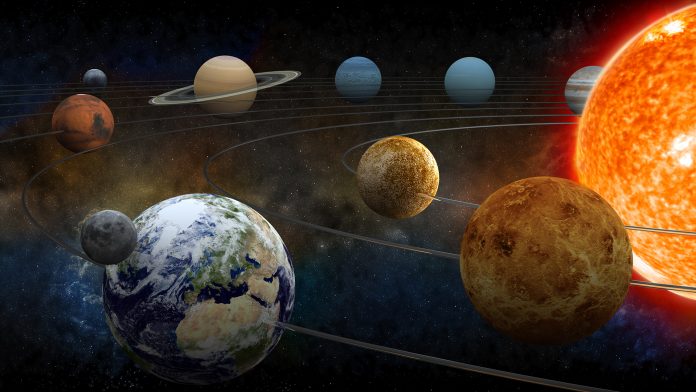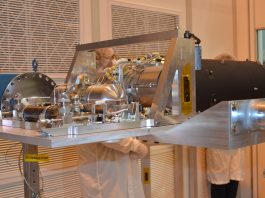New insights on iron from the University of Oxford could narrow down the search for life on other planets. The Innovation Platform spoke to the team involved to find out more.
An essential nutrient required for almost all life to grow, iron has been of crucial importance since the formation of planet Earth. Now, research from the University of Oxford on the importance of iron for the development of complex life on Earth could explain more about the possibility of life on other planets.
In work published in the journal PNAS, a team of scientists from the University of Oxford uncovered the likely mechanisms by which iron influenced the development of complex lifeforms. These findings can also be used to understand the probability of advanced lifeforms on other planets.
As well as aiding in the search for suitable planets to develop lifeforms, the research also suggests that, by assessing the amount of iron in the mantle of exoplanets, it could be possible to narrow the search for exoplanets capable of supporting life.
Co-authors of the study, Hal Drakesmith, Professor of Iron Biology at the MRC Weatherall Institute of Molecular Medicine, and Jon Wade, Associate Professor of Planetary Materials at the Department of Earth Sciences, outline the research in further detail and discuss its implications for further discovery.
How was the research carried out and what were the key findings?
We examined how the oxygenation of the oceans would influence the solubility of iron, which would in turn impact the availability for life. In particular, we looked at how oxygen affected the relative amounts of ferrous iron (Fe2+), compared to ferric iron (Fe3+). We found that the emergence of oxygen caused a dramatic loss of ferrous iron, while ferric was less affected, meaning that the latter became the more abundant form. This is very important for biology, as almost all life requires iron to develop and thrive.
Many forms of life make molecules called siderophores, which very tightly and specifically bind and capture Fe3+. Siderophores are used to capture iron both from the environment, but also during infection – when bacteria steal the iron they need from their host. The host then responds to defend its crucial iron resources. The oxygenation of the planet therefore posed the fundamental biological question of how life obtains the iron it needs, which has been solved through a variety of means, including infection. Infection itself sets up a competitive structure between lifeforms and drives diversity.
From the perspective of planets, the amount of iron in the rocky portion of the planet – the planet’s mantle – is dependent on the conditions of planetary accretion and the events that happened at the very birth of the planet. The planet Mercury possesses a rocky mantle that contains much less iron than that of Earth, which, in turn, has less than half the mantle iron content of Mars. Our knowledge on Venus is limited but various lines of evidence suggest it is similar to Earth in terms of content.
In essence, as you progress out of the Solar System, the rocky planets (Mercury, Venus, Earth, and Mars) exhibit rocky portions that become increasingly rich in iron, which is likely to be connected to their proximity to the point at which water vapour condenses to ice in the Solar System. From the perspective of life, this is important as iron must be abundant on the surface. Additionally, less iron also implies that there would be less of other elements that behave similarly to iron during the formation of a planet and are vital for life. For example, less molybdenum and chromium on planets such as Mercury would make it difficult for life to form.
In contrast, planets like Mars with lots of iron may face the challenge of retaining water on the surface for periods long enough to allow complex life to evolve. The iron in planetary mantles is primarily in the reduced oxide form (iron(ii) oxide, FeO) and this is prone to oxidise with water, forming iron(iii) oxide, Fe2O3, commonly seen as rust. In doing so, this oxidation of iron consumes water – a process that is likely to have been important four billion years ago on Mars, when it also generated hydrogen that kept Mars warm. Unfortunately for life, the reaction consuming water is one explanation why we believe Mars has lost most of its water early, around one billion years after the formation of the planet, which would have been harmful to the initiation of life.
How was it determined that iron is integral to the development of complex life on Earth?
The decline in iron availability after the Great Oxygenation Event, and again after the Neoproterozoic Oxygenation Event, coincided with remarkable evolutionary leaps including the development of more sophisticated lifeforms called eukaryotes, the formation of mitochondria that use iron to convert oxygen into energy, and multicellular organisms that recycle their own iron, decreasing the need to acquire iron from outside sources. We propose that complex life arose, at least in part, as a necessary response to the changing planetary environment that altered the availability of crucial nutrients, with iron chief amongst them.
How important is a precise balance of iron and other conditions to support life?
Iron is certainly not the only element critical for life. Other metals also play very important roles. These include zinc, molybdenum, manganese, and copper. Having these metals available is likely to be necessary for life. However, iron does have unique properties that other metals lack, including the ability to shuttle electrons easily and bind other elements in a variety of orientations, which makes it particularly useful in biochemistry. Furthermore, the abundance of iron in the mantle is critical to set initial conditions to kickstart life, including regulating the amount of water that is available at the planetary surface.
Do these findings support or discount any existing theories about life on other planets?
Our findings broaden current ideas. A considerable amount of superb research has been carried out in past decades, focussing on the origins of life. In this field, a role for iron in catalysing chemical reactions, and helping biochemistry and metabolism to emerge from geochemistry, is well supported.
However, we have described a longer narrative in which this role of iron in the initiation of life is followed and amplified by the subsequent loss (via oxygenation) of available iron from the biosphere. Evolution has not been able to find a way of avoiding the use of iron, so the need for it created evolutionary selection pressures that we propose stimulated evolutionary diversification and the development of complex life from simpler precursors.
By assessing iron in the mantle of exoplanets, will it be possible to narrow the search for exoplanets capable of supporting life?
This idea that the iron content of the silicate, rocky portion of the planet places constraints on the habitability of planets is, as far as we know, new. It means that a planet’s suitability for life is not just the presence of water or the ‘ideal’ distance from a star, but is also dependent on how the planet was accreted. In effect, it is the recipe, as well as the ingredients, that matter.
This research demonstrates not only how important the planet is to life, but also explains how the evolution of the surface is fundamental to the evolution of complex life. It also highlights that the resource limitations that the planet imposes on life may be key to the development of complex life and some of its behaviours.
What implications can these findings have for future discovery and what are your plans for further research in this area?
With specific reference to the concept above, we will explore how loss of iron influences biochemistry and whether we see an emergence of diversity of metabolic activity in cells as they lose iron.
More generally and more importantly, however, we plan to increase the amount of cross-disciplinary research that occurs in our institution. We feel that linking fields that do not normally interact closely has the potential to lead to many unexpected and exciting discoveries.
Hal Drakesmith
Professor of Iron Biology
MRC Weatherall Institute of Molecular Medicine
University of Oxford
www.imm.ox.ac.uk
https://www.linkedin.com/in/hal-drakesmith-2a52a737/?originalSubdomain=uk
https://twitter.com/Drakesmith_Lab
Jon Wade
Associate Professor of Planetary Materials
Department of Earth Sciences
University of Oxford
www.earth.ox.ac.uk
https://www.linkedin.com/in/jon-wade-9a14628b/?originalSubdomain=uk
https://twitter.com/World_of_Wade
Please note, this article will also appear in the ninth edition of our quarterly publication.









